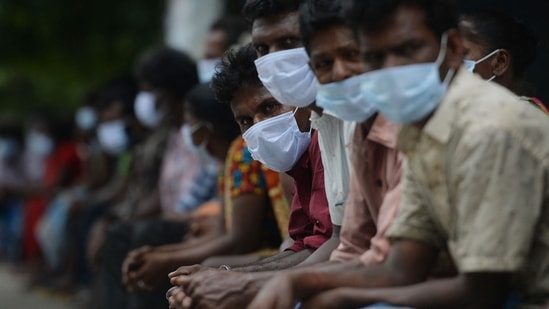Neighbourhood’s first responder: India’s approach to humanitarian assistance
Saneet Chakradeo is a research analyst with the Centre for Social and Economic Progress.
The deadly 2015 Nepal earthquake evoked an outpouring of support from the international community, with neighbour India being the quickest to respond. It launched Operation Maitri by deploying the Indian Army, the Air Force, and other specialised teams.

However, as the relief measures went on, there were also accusations of the Indian contingent hindering other international aid efforts, lack of coordination between Indian and Nepali agencies, and insensitive reporting by the Indian media. As a result, India’s largely successful operation raised some questions on its organisational and technical preparedness on disaster relief and management in the region. Moreover, the massive international response to the crisis featured bilateral assistance from six different South Asian countries but with no coordinated relief effort, including from the South Asian Association for Regional Cooperation (SAARC). India’s leading role thus paradoxically also exposed the absence of effective regional mechanisms for disaster relief in South Asia.
As part of CSEP’s Sambandh Initiative on regional connectivity, a policy brief by Saneet Chakradeo maps India’s Humanitarian Assistance Disaster Relief (HADR) operations and its many dimensions – bilateral, multilateral, and civil society contributions. It studies assistance and relief provided by India to eight of its neighbouring countries – Afghanistan, Bangladesh, Bhutan, the Maldives, Myanmar, Nepal, Pakistan, and Sri Lanka, which are collectively referred to as South Asia.
The case of Nepal reflects four trends in India’s approach to HADR. First, the centrality of its immediate neighbourhood. Geographically, India’s HADR historical footprint can be largely traced to the subcontinent and, in a more limited way, to the Indian Ocean region. According to one estimate, more than two-thirds of India’s humanitarian assistance has been directed to South Asia. Second, South Asia is particularly vulnerable to natural calamities. Since 1970, the number of disasters in the region has increased five-fold with estimated direct losses amounting to $80 billion. Third, under the label of “first responder,” India has been signalling its intent to be a leading actor during emergencies in its neighbourhood. Ambitious assessments and declarations by India’s officials, along with India’s improved economic and military capabilities, have led to greater expectations from neighbours in times of crises. Finally, beyond the case of Nepal’s earthquake, a range of new types of emergencies is also plaguing the region. Such non-traditional crises include pandemics, chemical and biological accidents, industrial failures and terrorist attacks. Together, they have pushed the boundaries – both geographically and technically – of the traditional conception of humanitarian crises. The Covid-19 pandemic emphasises the changing nature and growing complexity of such emergencies.
To realise its leadership ambition, respond to new expectations, and address an increasingly complex and frequent range of emergencies in the neighbourhood, India will have to adapt on two fronts. Internally, India needs to focus on better coordination between the multiple government agencies handling overseas relief operations, state governments providing crossborder assistance, the media, and civil society. Externally, India must improve bilateral and multilateral collaborations with its neighbours and leverage regional institutions for disaster management.
Bilateral Assistance
India’s 2004 tsunami relief operations were crucial in emphasising HADR within its policy discourse, paving the way for more operations abroad in the coming years. In spite of being one of the most severely affected countries, India refused foreign assistance in the immediate aftermath of the tsunami even while assisting its neighbours Sri Lanka and the Maldives. India’s post-tsunami relief efforts were followed by operations in Bangladesh after cyclone Sidr and in Myanmar post cyclone Nargis. The following decades saw India ramp up its HADR endeavours in the region, with Operation Maitri being the biggest of them all.
Regional States and Civil Society Contributions
An interesting domestic aspect of India’s external relief operations has been the role of state governments in providing cross-border humanitarian assistance. State governments are becoming increasingly involved in disaster relief to neighbouring countries because of proximity, cultural and political reasons.
Such activism of regional states is often a reflection of civil society mobilisation to support relief across borders. In a country as vast as India with cultural relations transcending boundaries, non-governmental organisations and civil society play a crucial role in on-ground disaster relief.
Many of India’s other border-states share people-to-people linkages with neighbouring countries due to the prevalence of common ethnicities and a history of cultural exchange. For example, after the 2017 cyclone hit Kachin, organisations in Mizoram contributed towards the affected Zo communities across the border. Similarly, shared ethnicities play a role in cross-border exchanges between Tamil Nadu and Sri Lanka, West Bengal and Bangladesh, and Bihar or Uttar Pradesh and Nepal.
The study can be accessed by clicking here
(Saneet Chakradeo is a research analyst with the Centre for Social and Economic Progress)



